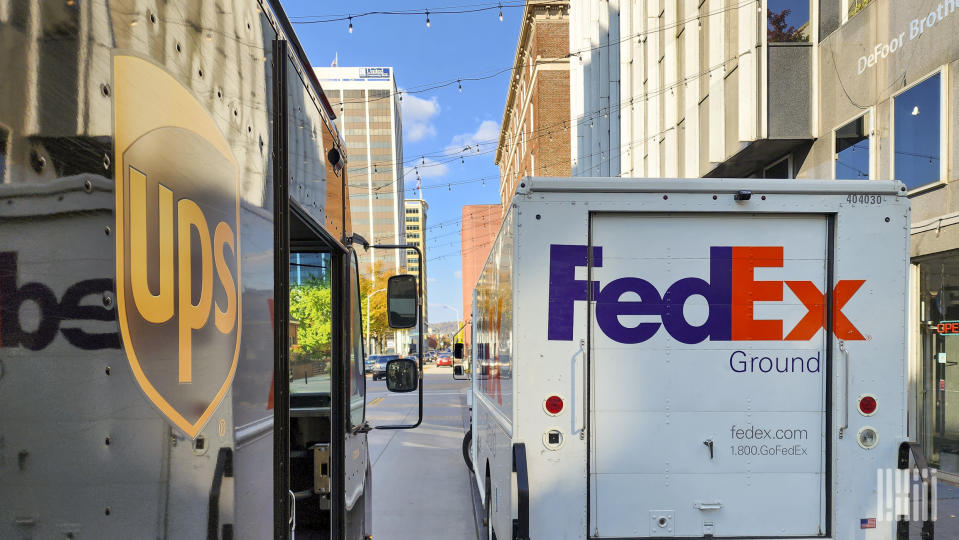Parcel carriers still operating according to 1980s narrative

By Satish Jindel
The views expressed here are solely those of the author and do not necessarily represent the views of FreightWaves or its affiliates.
In many respects, the parcel market of 2024 still looks very much like that of 40 years ago when RPS broke into a practical monopoly of UPS. While transit time is faster for ground service, the service offerings, operational network and technology have largely remained unchanged.
For example, the transit time commitments for overnight express delivery are still 10:30 a.m. and noon, the bar codes are the same despite major advancement in technology, and the zone concept — developed by the U.S. Postal Service many decades ago and before the interstate highways were built for faster transportation — is the same.
Even more shocking is that both FedEx and UPS still have a three-day deferred service as part of their portfolio of express services when their ground service is now faster in many lanes and at a considerably lower cost.
Furthermore, while the express services offered guaranteed delivery or money back for service failure, that guarantee was first suspended with the start of the COVID-19 pandemic in March 2020.
Then, after the pandemic was over, the guarantee was only restored for overnight express service. As such, two-day air express and three-day deferred express services offer no premium value for the much higher charge while being no faster, and at times being even slower than ground service.
And, since 1985, the customers have evolved dramaticall,y resulting in the following changes: More products are ordered online and 24 hours a day, thereby offering opportunity for pickup even in the morning, with more deliveries made to residences than 30 years ago.
Even businesses have the ability to communicate more frequently in a day, allowing premium express parcels to be delivered at desired times for different office complexes, and to avoid parcels being shipped for overnight delivery by 7:30 a.m. only for the delivery driver to find the offices are not open.
In addition, a combination of routing software and skills of AI now allows carriers to optimize their service offerings that meet their operational network to balance customer preferences with delivery density to achieve a higher level of customer experience at a lower cost, which was impractical in the past.
Among the three national for-hire carriers, the Postal Service has been the only one to realign its parcel service offering. Last summer, when it combined three parcel services (first class, parcel select ground and retail ground) into Ground Advantage and included $100 of insurance, it made the least expected bold move.
The result has been its two-to-five-day commitment time has been well received, and ShipMatrix data on millions of parcels shows that it now has on-time performance approaching the high-90% mark normally reserved for FedEx and UPS.
And, if the Postal Service can rapidly complete the realignment of the Priority Mail (which is not a mail service so why not brand it as Priority Advantage?) parcel network so as to achieve on-time performance to match that of Ground Advantage and that of the deferred express services of FedEx and UPS, it will stand to gain market share.
In addition to the changes pushed by the Postal Service and Amazon, the parcel market for the first time since 1985 has seen the emergence of new parcel carriers like Axlehire and Veho, which are utilizing new approaches. Whether or not they succeed in gaining a large share of the market, they are challenging the 40-year-old narrative.
With UPS faced with high costs from a unionized labor contract and FedEx with the handling of an integration of Express and Ground networks, the timing could not be better for both to develop a parcel service that would meet the demands of customers and lower operating costs to fend of new competition from startup carriers and from Amazon’s new door-to-door offering. That offering seeks to leverage Amazon’s huge backhaul capacity at lower cost and higher service level with greater use of data analytics.
While Amazon’s two-day and next-day delivery quickly became the standard copied by its competitors, at least two new online retailers are responding to new customer demands. Temu and Shein are showing that consumers do not need most items in one or two days and are willing to receive their orders within seven to 12 days for a comparable-quality product at a considerably lower price.
So, it is time for shippers to embrace carriers that are making changes to meet today’s market needs and regain control over their parcel spend, which increased dramatically during the pandemic as carriers suddenly took higher base rate increases and imposed new surcharges.
Satish Jindel is president of ShipMatrix Inc. and a founding member of RPS (now FedEx Ground).
The post Parcel carriers still operating according to 1980s narrative appeared first on FreightWaves.
